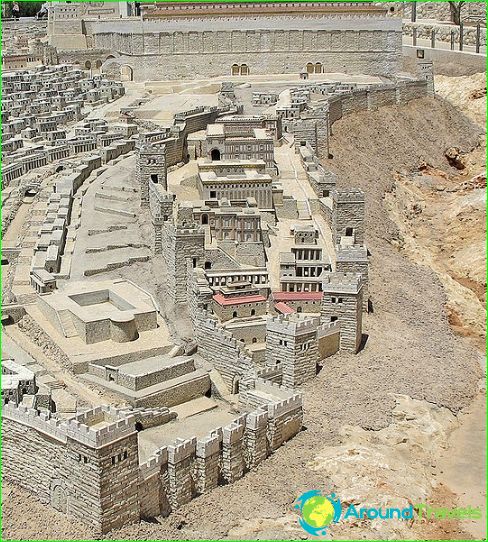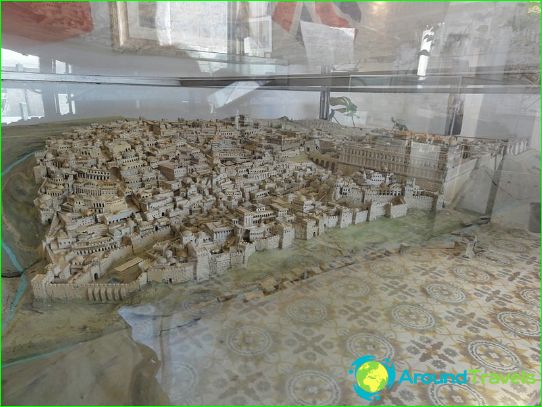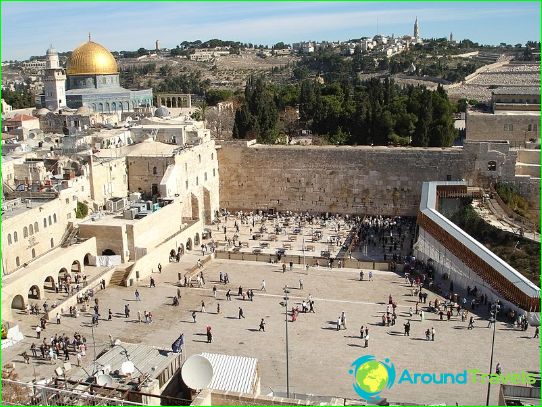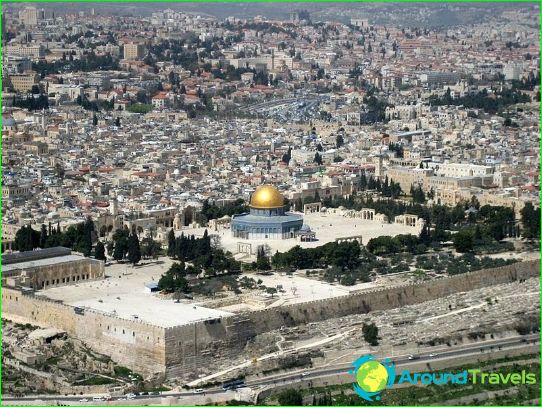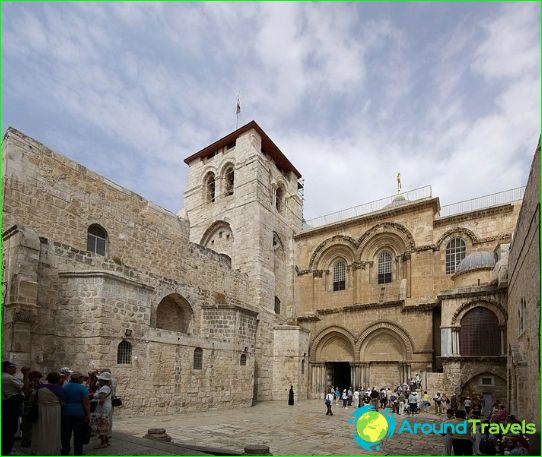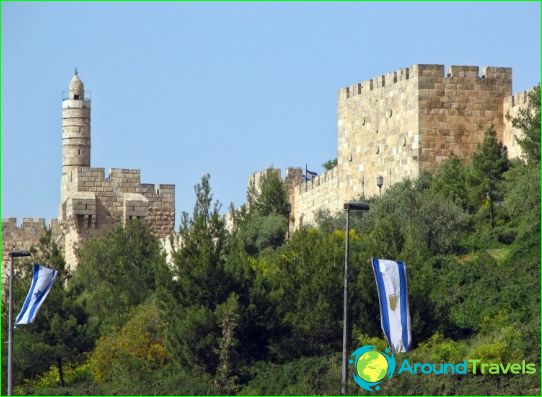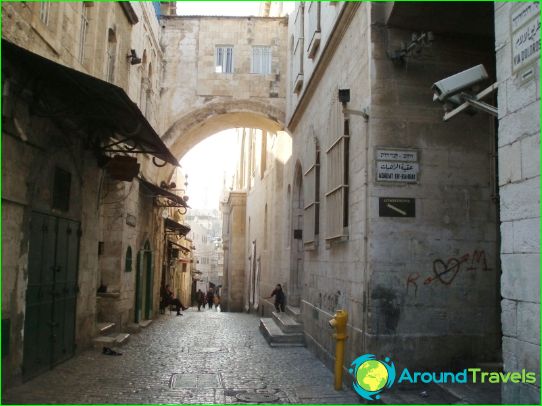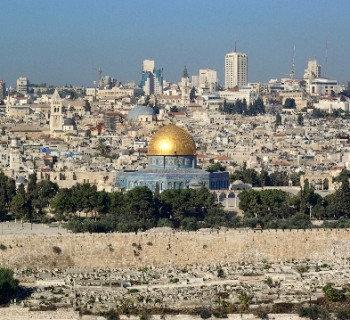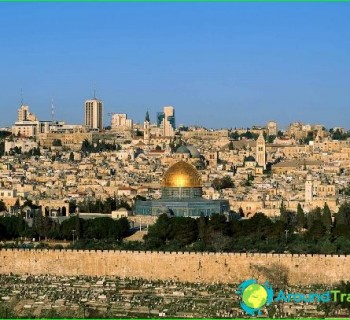History of Jerusalem

Coat of arms of Jerusalem
In the spurs of the Judean Mountains at an altitude of 650-840 m above sea level between the Mediterranean and the Dead Seas lies one of the oldest cities in the world - Jerusalem. It is a holy city for the three main Abrahamic religions - Judaism, Christianity and Islam..
Jerusalem has had its turbulent history since time immemorial and its exact date of foundation is not known for certain. Archaeological research has shown that the first settlement existed on the slopes of the Temple Mount as early as the 4th millennium BC. Approximately in the 2nd half of the 3rd millennium BC. in the lands of modern Jerusalem, the Canaanite people, the Jebusites, founded a city referred to in the Old Testament and the Pentateuch as Jebus and Shalem. About the existence of the city in the 2nd millennium BC evidenced by the unique ancient artifacts and writings found during excavations (Egyptian proscriptions, Amarna archive, etc.).
According to biblical accounts, around 1000 BC. the city was captured by the Israelites, led by King David, who thoroughly expanded and rebuilt Jerusalem, which instead of Hebron became the capital of the kingdom of Israel. At the initiative of David, the greatest shrine of the Israelite people, the Ark of the Covenant, was transferred to Jerusalem. The city became the main religious center of all twelve tribes of Israel, which was greatly facilitated by the first Jerusalem temple, which was soon built by David's son Solomon on the Temple Mount. After the collapse in 928 BC. Kingdom of Israel Jerusalem became the capital of the Kingdom of Judah.
At the beginning of the 6th century BC. Judea was conquered by Babylon, and Jerusalem was thoroughly destroyed. In fact, the Jerusalem temple was also destroyed. After the second half of the 6th century BC. power in the Jewish lands came under the control of the Persian Empire, King Cyrus the Great, probably in order to strengthen his political positions, issued a decree authorizing the return of Jews to their lands and the restoration of the Jerusalem Temple. And although due to feuds between the Jews and the Samaritans, the construction of the temple was eventually postponed by 15 years, in 516 BC. The second Jerusalem temple was built. Jerusalem was rebuilt only by the middle of the 5th century BC.
Starting from the 4th century BC. Jerusalem was ruled alternately by the Macedonians, Egyptians and Seleucids. By the middle of the 2nd century BC. the Jews managed to win back their kingdom, but already in 63 BC. The Romans, after a three-month siege, took Jerusalem by storm and the city became the administrative center of the Roman protectorate of Judea. Herod the Great made a huge contribution to the development and improvement of Jerusalem during the Roman era during his reign..
In 70 A.D. Jerusalem was destroyed again. The spiritual heart of the Jewish nation, the Second Jerusalem Temple, was also completely destroyed. Only in 135 A.D. on the site of Jerusalem, which was actually wiped out from the face of the earth, by the decree of Emperor Hadrian, the Roman city of Aelia Capitolina began to be erected, access to which was strictly forbidden to Jews.
After the collapse of the Roman Empire, Jerusalem fell under the control of Byzantium and gradually acquired a Christian appearance, and already in the 7th century, after the capture of the city by the Arab Caliph, Muslim features began to appear clearly, which were thoroughly consolidated during the long domination of Jerusalem by the Ottoman Empire in 1517-1917..
After the end of the First World War, by the decision of the League of Nations, Palestine with the administrative center in Jerusalem came under British control, which should have had a positive effect on the long-term persistent Arab-Israeli conflict (in history, this period is known as the British Mandate in Palestine). One of the main stumbling blocks in this conflict has always been Jerusalem, which occupies a special place in the religion of both peoples, neither of which was ready to give up. By the end of 1948, the city was divided into two parts - East and West, controlled by Arabs and Jews, respectively. In 1980, united Jerusalem was officially declared the capital of the State of Israel, but it was never recognized by the world community. Today, the status of sacred Jerusalem is still a contested territory between Israel and Palestine and the subject of the most heated debate..
Pictures of Jerusalem
-
Coat of arms of Jerusalem
-
Model of the Second Jerusalem Temple
-
Model of Jerusalem before the destruction of 70 AD.
-
Wall of Tears
-
Temple Mount and Dome of the Rock Mosque
-
Church of the Holy Sepulcher
-
Tower of David and walls of the Old City
-
Old Jerusalem street
